While it might go against your instincts, planting flower seeds during the fall season can actually be quite beneficial. Not only can it give your plants a head start on growth, but it can also reduce the amount of work you have to do in the spring for your garden.
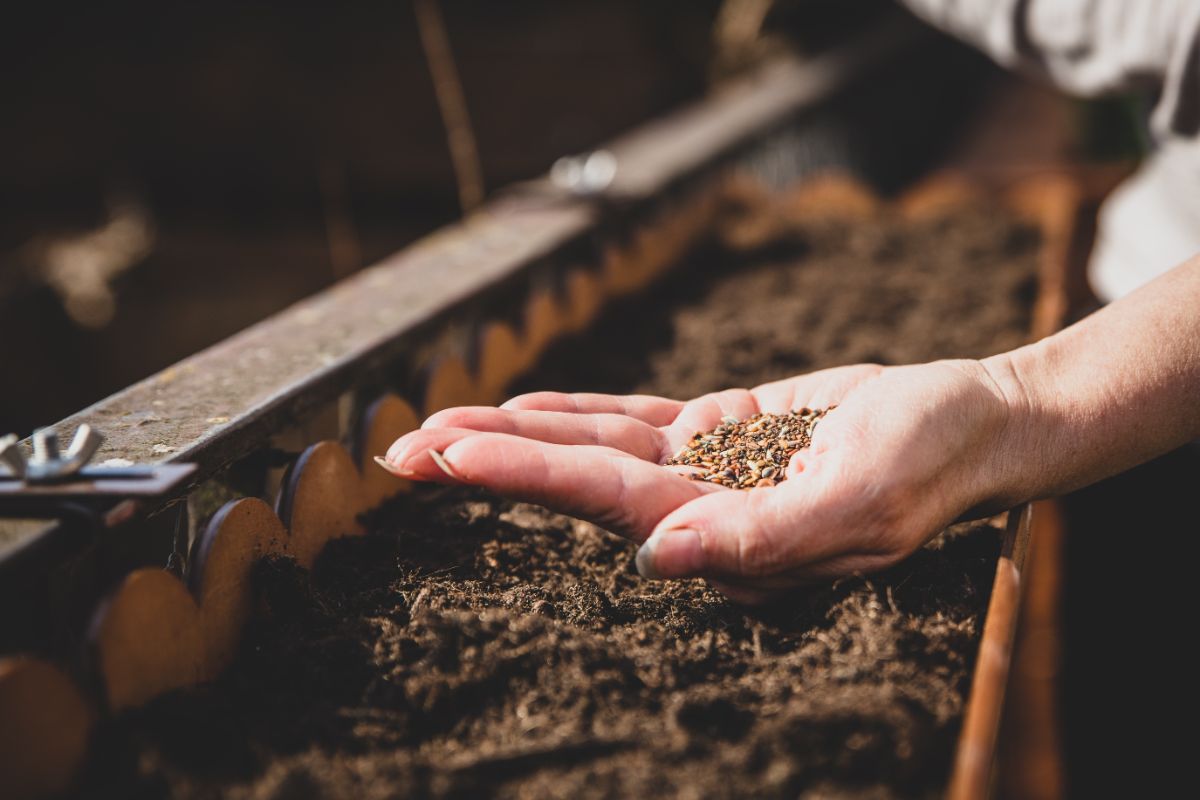
Autumn is the perfect time to plant certain flower seeds, as they have the opportunity to establish themselves before winter sets in. This means that come springtime, they will be well-rooted and ready to thrive. Additionally, fall sowing allows for earlier blooms in the following year and can attract pollinators to your garden.
When to plant flower seeds in autumn?
It is best to plant flower seeds in autumn when the soil has cooled down but is still warm enough to allow for germination. Typically, this falls between mid-September and mid-October, depending on your location.
How to plant flower seeds in autumn?
To plant flower seeds in autumn, start by preparing your soil through weeding and loosening it up. Directly sow the seeds into the ground and lightly cover them with soil. Water thoroughly and keep the soil moist until the seeds sprout.
Here are 20 annual flower seeds that are perfect for fall sowing:
1. Nasturtium (Tropaeolum majus)
2. Sweet peas (Lathyrus odoratus)
3. Foxglove (Digitalis spp.)
4. Snapdaons (Antirrhinum majus)
5. California poppy (Eschscholzia californica)
6. Calendula (Calendulaofficinalis)
7. Dyer’s coreopsis (Coreopsis tinctoria)
8. Pansy (Viola tricolor)
9. Larkspur (Delphinium spp.)
10. Sweet William (Dianthus barbatus)
11. Bells of Ireland (Moluccella laevis)
12. Virginia stock (Malcolmia maritima)
13. Baby blue eyes (Nemophila menziesii)
14. Love in a mist (Nigella damascena)
15. Sweet alyssum (Lobularia maritima)
16. Cosmos (Cosmos bipinnatus)
17. Flax (Linum grandiflorum)
18. Morning glory (Ipomoea purpurea)
19. Bachelor buttons (Centaurea cyanus)
20. Eryngo (Eryngium armatum)
In summary, planting flower seeds in autumn can be a great way to establish beautiful flowers in your garden come spring. With proper preparation and care, these 20 annuals are perfect for fall sowing and can add color and life to your outdoor space.
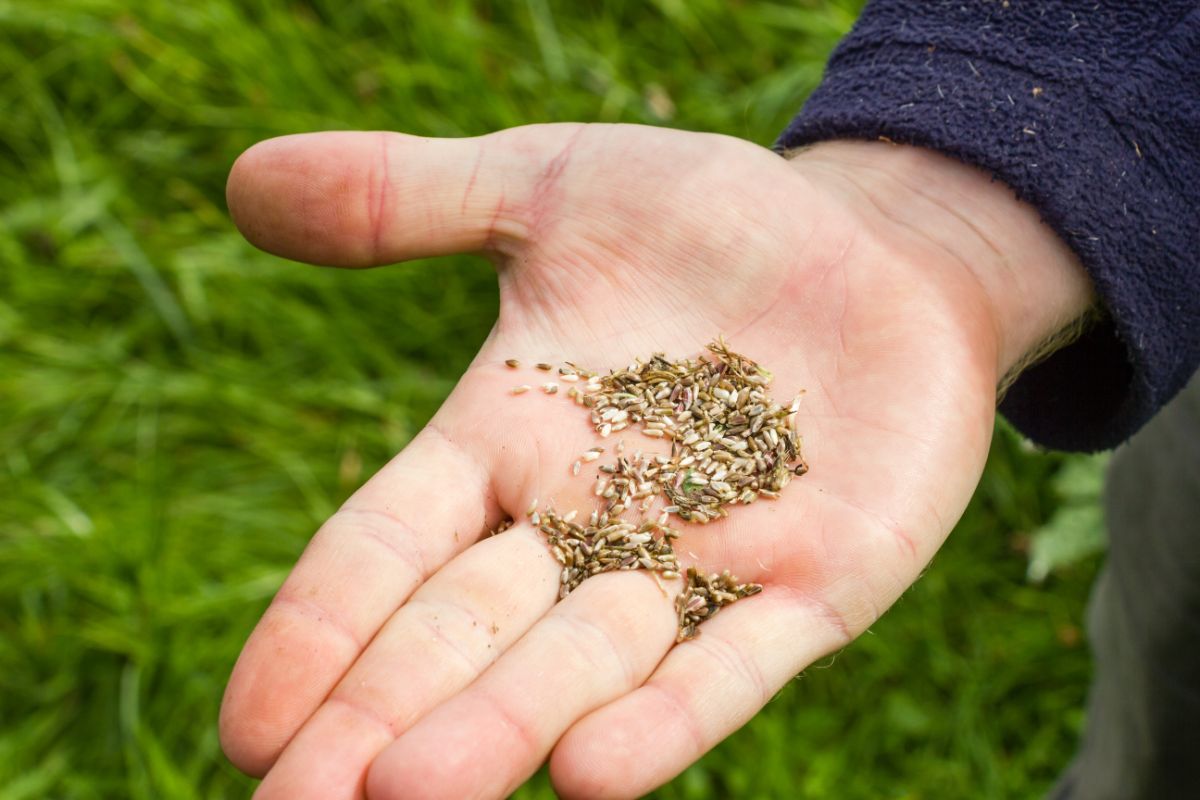
Planting flower seeds in the fall is a great way to help seeds that require cold stratification. Certain flowers germinate better after being exposed to cold weather, which can be achieved by placing the seeds in the fridge for a few weeks. However, you can also plant the seeds outdoors before winter and let nature do the work for you. This not only simplifies your gardening tasks in the spring but also allows flowers to sprout earlier in the year, extending your growing season. So, if you’re wondering when to plant flower seeds in the autumn, now is a great time to start!
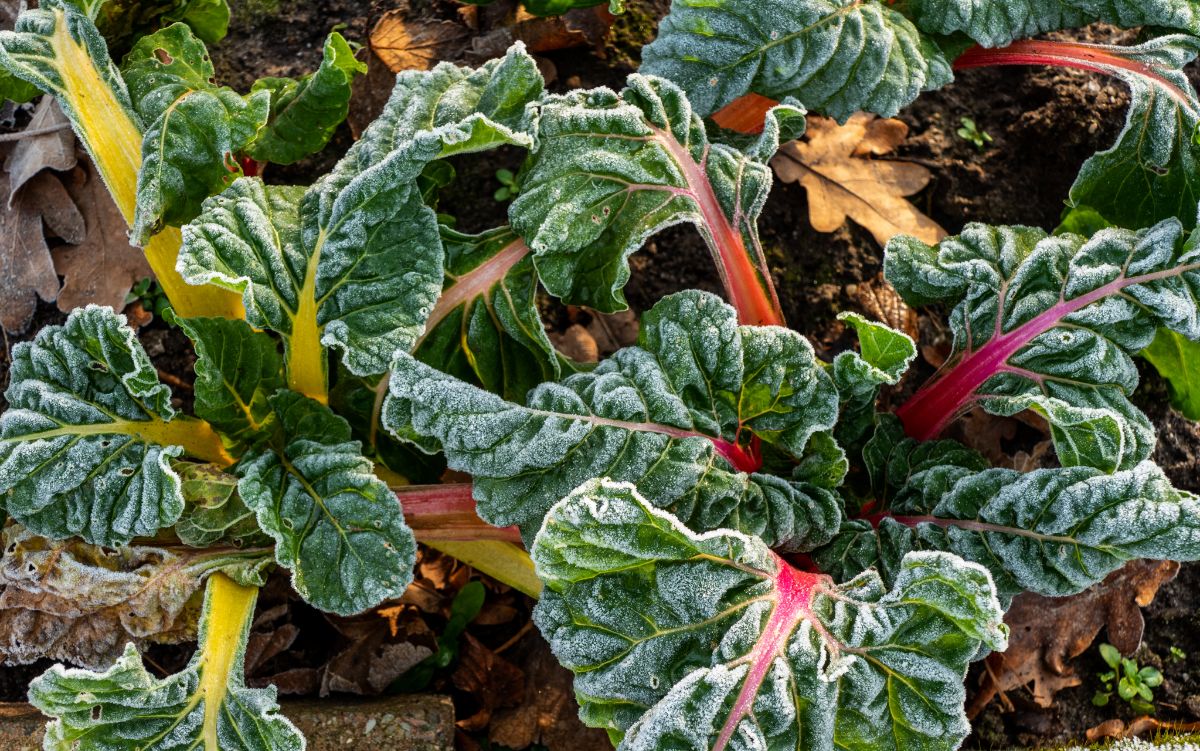
To avoid premature sprouting, it is recommended to plant flower seeds during the fall season after the growth period comes to an end. The ideal time for sowing these seeds in autumn varies depending on the region you reside in. For those residing in colder climates, it is best to plant flower seeds outside in late fall or early winter after experiencing a few hard-killing frosts. Planting seeds later in the season ensures that they do not sprout before the winter. Conversely, those living in warmer regions should consider sowing their flower seeds just before the rainy season starts either in late fall or early winter. To plant flower seeds in autumn, it is important to keep in mind the optimal timing based on your specific location and climate.
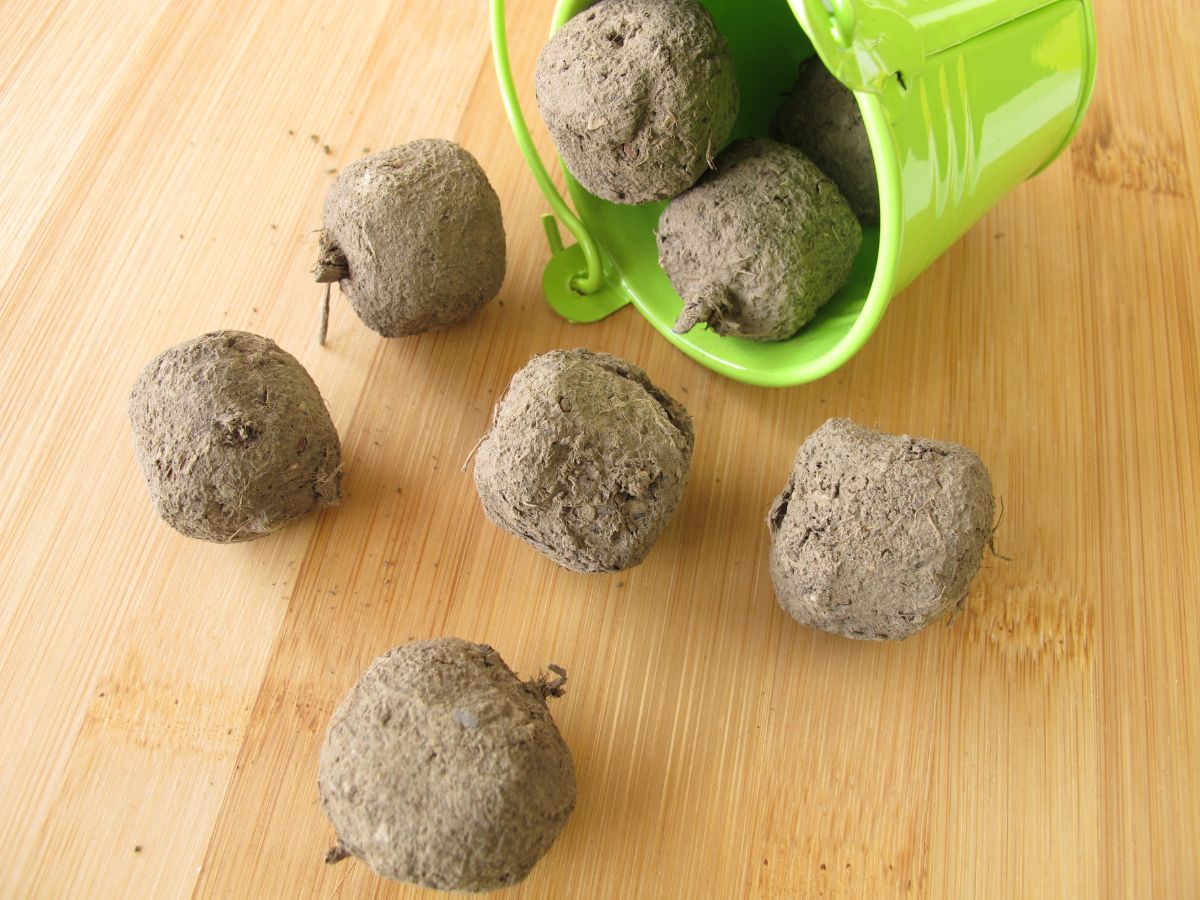
If you’re looking for a fun and eco-friendly way to plant your fall garden, consider making seed bombs. These handy little balls of soil, compost, and seeds can be easily scattered across your garden for effortless planting. It’s important to remember that different plants have different needs, so always consult your seed packets for specific growing instructions.
To get started with fall planting, you’ll want to prepare your soil. This means raking away any fallen leaves and removing any debris from last year’s garden. Once you’ve got a clean slate, spread a layer of compost over your beds and start planting your seed bombs. You can either plant them individually or scatter them by hand for a more natural look.
With these simple tips, you’ll be well on your way to a thriving fall garden. Happy planting!
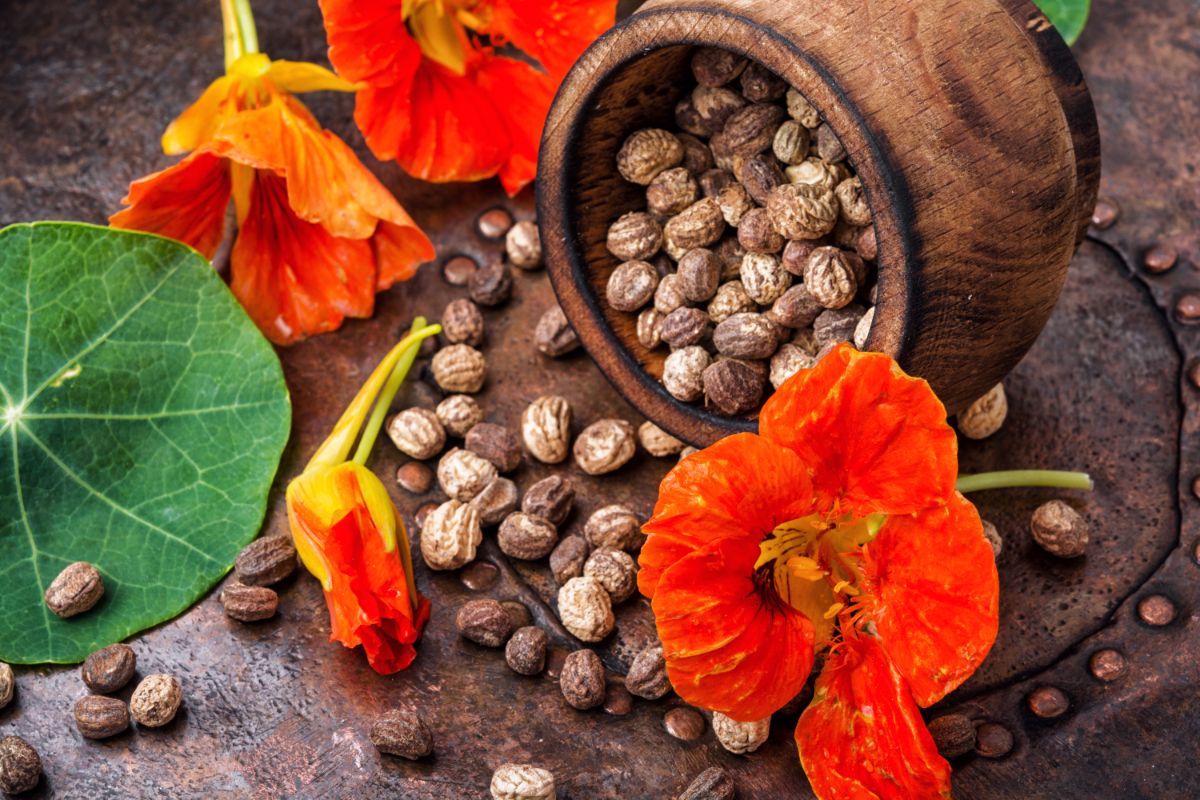
Autumn provides a wide range of options when it comes to sowing seeds, but some flowers are more suitable for this season. While there are a variety of perennial plants that can be seeded in your garden during the fall, certain annuals stand out above the rest. To ensure success, it is recommended that you plant your seeds in late autumn or early winter, as seedlings may emerge prematurely and run the risk of rot if planted earlier. However, the process of sowing annual flower seeds during the fall is relatively straightforward, particularly with these simple yet stunning ornamentals! One such example is the Nasturtium (Tropaeolum majus).
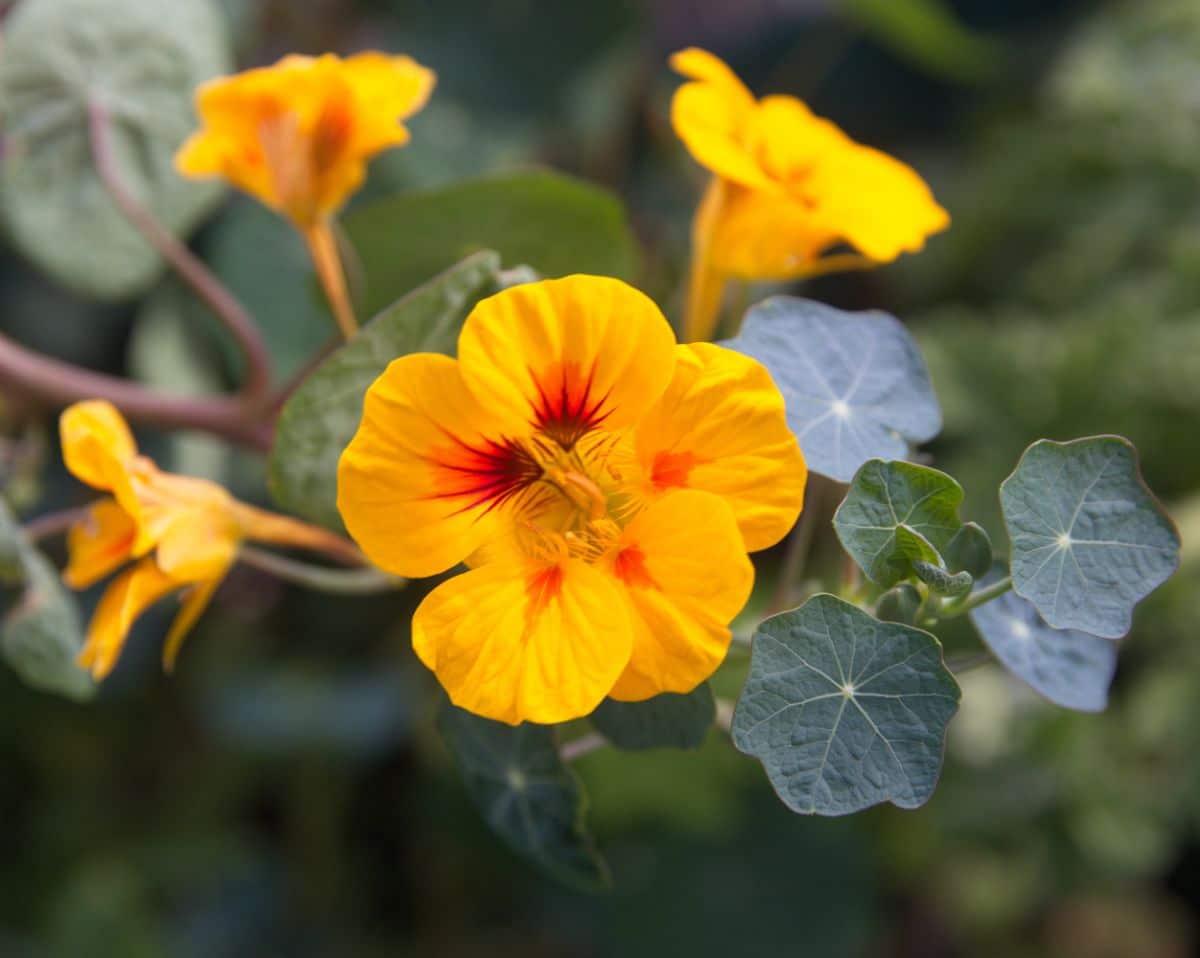
Fall is the perfect time to sow sweet peas, which are known for their fragrant blooms. These flowers are often planted alongside other plants in garden beds and containers.
Plant name: Sweet Peas (Lathyrus odoratus)
Light requirements: Full sun
Water requirements: Moderate
Growing zone: Zones 7 to 10
Sweet peas are not only known for their fragrance, but they also add a pop of color to any garden. These flowers are perfect for fall planting as they thrive in cooler temperatures. When planting sweet peas, it’s important to ensure they have full sun exposure. They also require moderate watering.
When planting sweet peas, make sure to sow them about 1″ deep in the soil. It’s recommended to plant them near other long-season blooming flowers such as snapdragons and calendula. With proper care, sweet peas will bloom beautifully in your garden beds or containers.
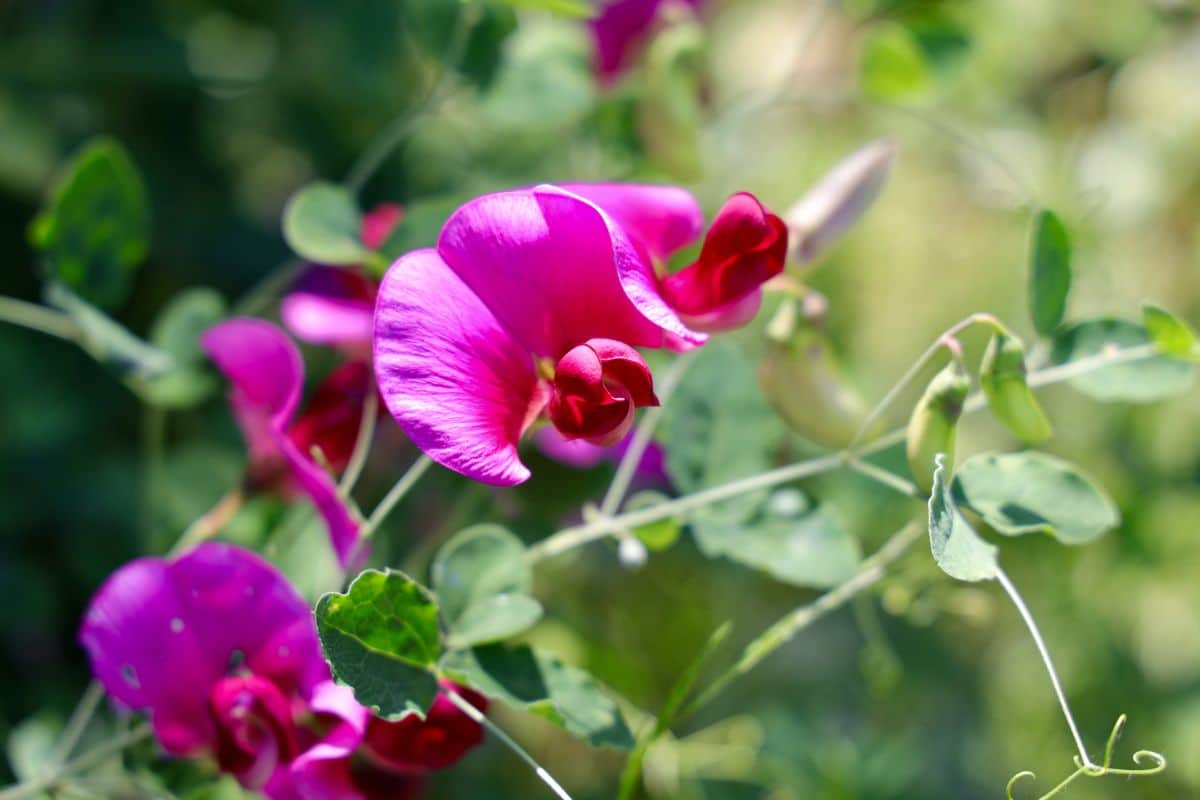
If you want to have sweet peas blooming as soon as spring arrives, it’s best to sow your seeds in the fall. Sweet peas are a popular addition to cottage gardens due to their charming and delicate flowers that come in various shades of pink, purple, blue, red, and white. While they are easy to grow from seed, sweet peas don’t thrive in hot weather, which is why it’s recommended to plant them in the spring or fall. If you opt for fall planting, your plants will have more time to establish their roots and produce flowers earlier in the spring. This method usually works best in regions with mild winters and hot summers, and it’s ideal to plant the seeds after Labor Day. Keep in mind that sweet peas are climbers, so make sure to leave enough space for trellising nearby.
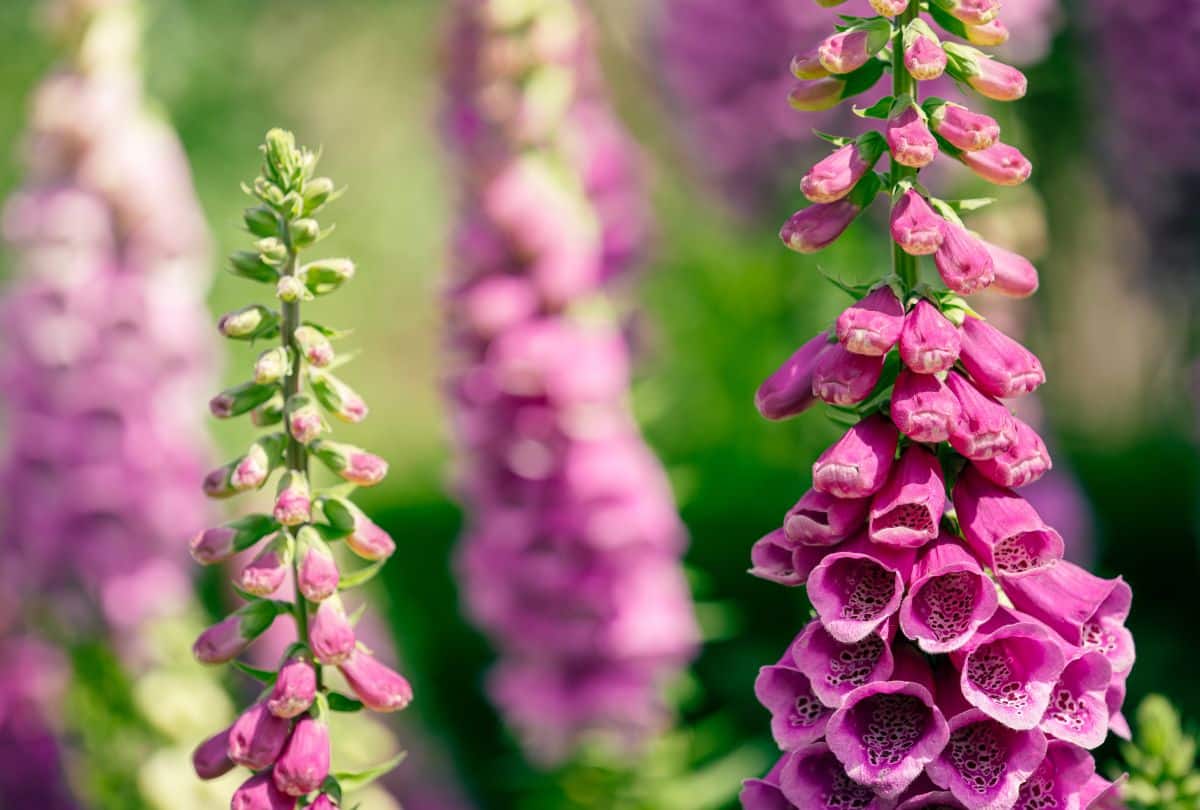
For optimal growth, it is recommended to plant foxgloves later in the season. These beautiful plants are popular for their tubular flowers that attract hummingbirds and add a lovely touch to native flower gardens and cottage gardens. Available in a range of colors, from pink and purple to yellow, red, and white, foxgloves are a great choice for any garden. To plant foxglove seeds, first, add some compost or aged manure into your garden bed. Then, sow the seeds lightly across the soil without covering them too much. Foxgloves thrive in moderate watering conditions and require full sun to part shade. They can grow in zones 4 to 10, making them a versatile choice for gardeners. Another great plant to add to your garden is the Antirrhinum majus, also known as snapdragons.
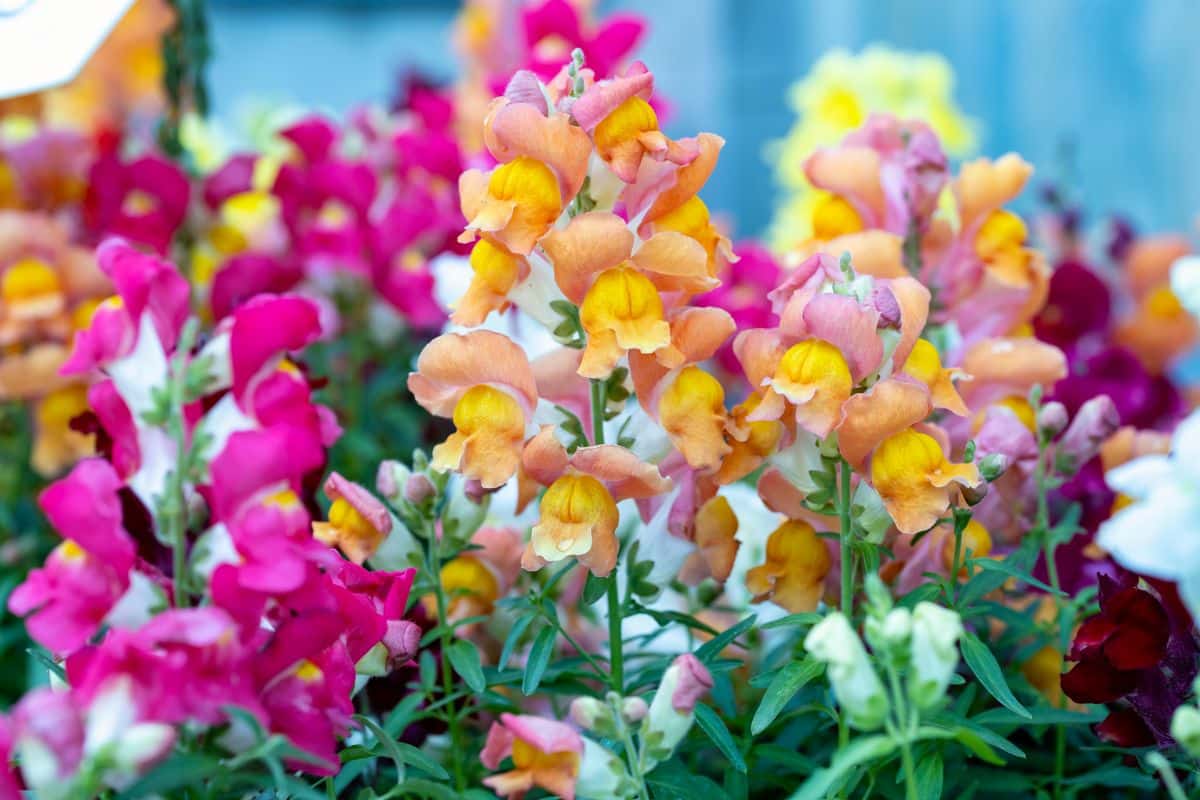
Snapdaons can be sown during the spring or fall season. It’s important to note that if you choose to plant them in the fall, make sure to do so after any killing frosts have passed. These lovely plants require moderate watering and thrive in full sun to part shade. They grow best in zones 7 to 11, making them a popular choice for many gardens. One of the reasons why snapdaons are so beloved is due to their adorable appearance. They typically grow to be about 15 inches tall, but there are some varieties that can reach up to four feet in height. Their blooms come in an array of colors, including magenta, peach, and canary yellow. While most people plant snapdaons in the spring, you can also plant them in the fall as long as you wait until the season has progressed enough to avoid early seed sprouting or rotting in moist soil. When the spring season comes around, your snapdaons will bloom beautifully, providing a delicate and charming addition to your garden or cut flower arrangements. Another excellent flower to consider planting is the California poppy (Eschscholzia californica).
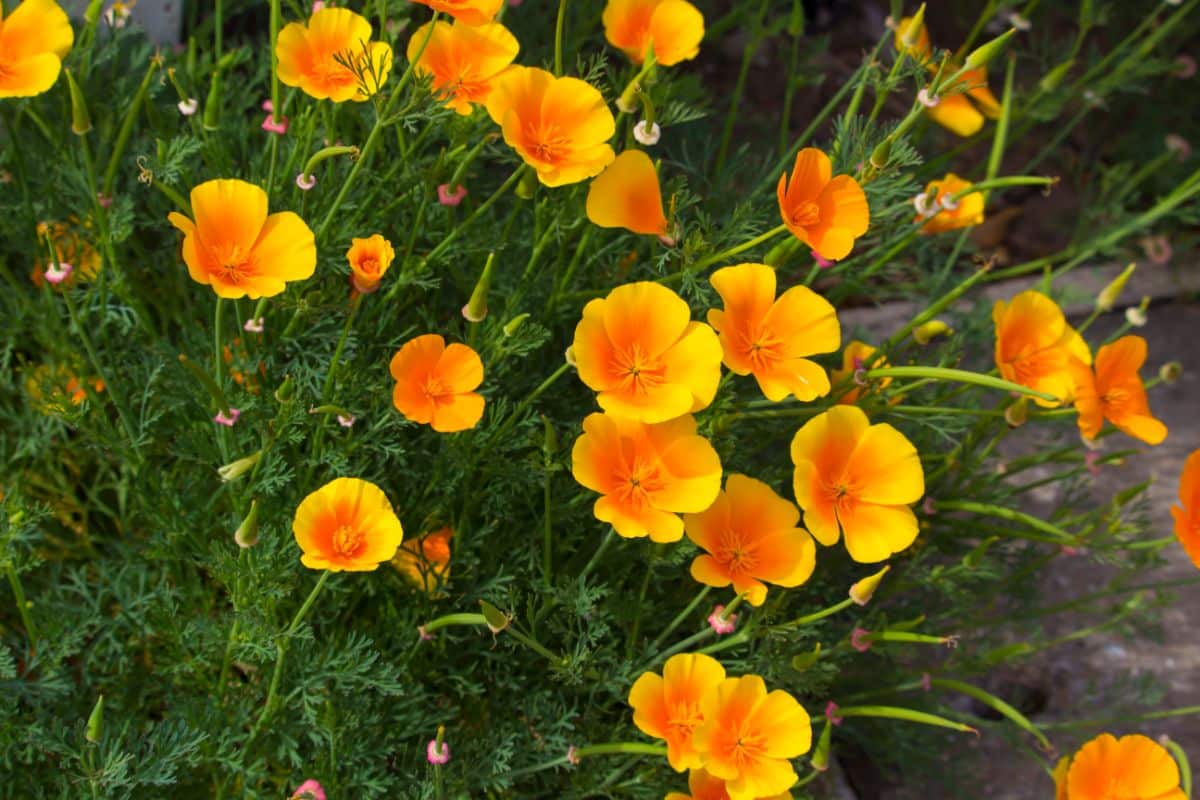
To avoid plagiarism, here is a paraphrased version of the content:
If you’re looking for an easy-to-grow and beautiful plant to add to your garden, consider California poppies. These flowers thrive in full sun and require very little water. While they are native to the western United States, they can grow as perennials in other regions with milder winters, as long as they are kept in suitable areas. California poppies typically grow in zones 6 to 10, but they can be grown as annuals in cooler climates.
You have two options for planting California poppies: you can directly sow them in your garden in the spring or start them indoors using seed-starting trays. However, the simplest method is to sow the seeds outdoors in the fall before the ground freezes. Just plant them about 1/16″ deep and wait for the spring rains to arrive and help them grow.
Another lovely plant to consider is calendula, also known as Calendula officinalis.

If you want your Calendula plants to reseed themselves, make sure not to remove their seed heads. These versatile plants can be grown as ornamentals, medicinals, and for attracting pollinators. Not only that, but Calendula flowers can also be used to create natural dyes and make lovely cut flowers. It’s no surprise that many gardeners choose to include Calendula in their gardens year after year. Starting these plants from seed is a breeze, and they can be directly sown in the garden in either the spring or fall. When left untrimmed, they’ll naturally self-sow in the autumn, but you can also plant their seeds deliberately in the fall for earlier blooms come springtime. Another great plant for natural dye-making is Dyer’s coreopsis (Coreopsis tinctoria).
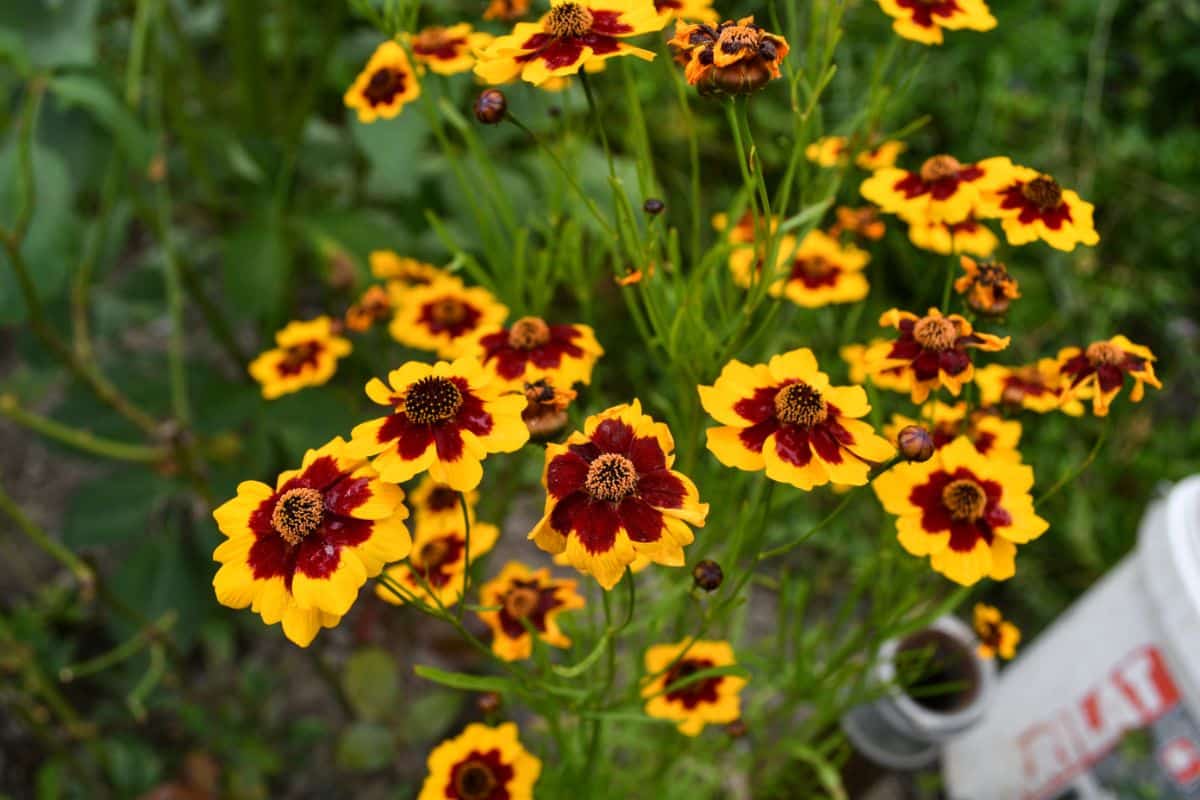
To protect Dyer’s Coreopsis from slugs and snails, it is recommended to sow the plant with alliums. This beautiful plant, which requires full sun and moderate to low water, is perfect for tinting natural fabrics like wool and cotton. Its small, colorful blooms appear in shades of red, yellow, copper, and orange, with some bi-colored options available. Dyer’s Coreopsis is a hardy plant that grows well in dry soil and can be easily sprouted from seed, either indoors in the spring or directly sown in your garden in late fall. To keep slugs and snails at bay, consider planting Dyer’s Coreopsis alongside alliums, which serve as natural pest control. Another great garden flower is the Pansy (Viola tricolor).
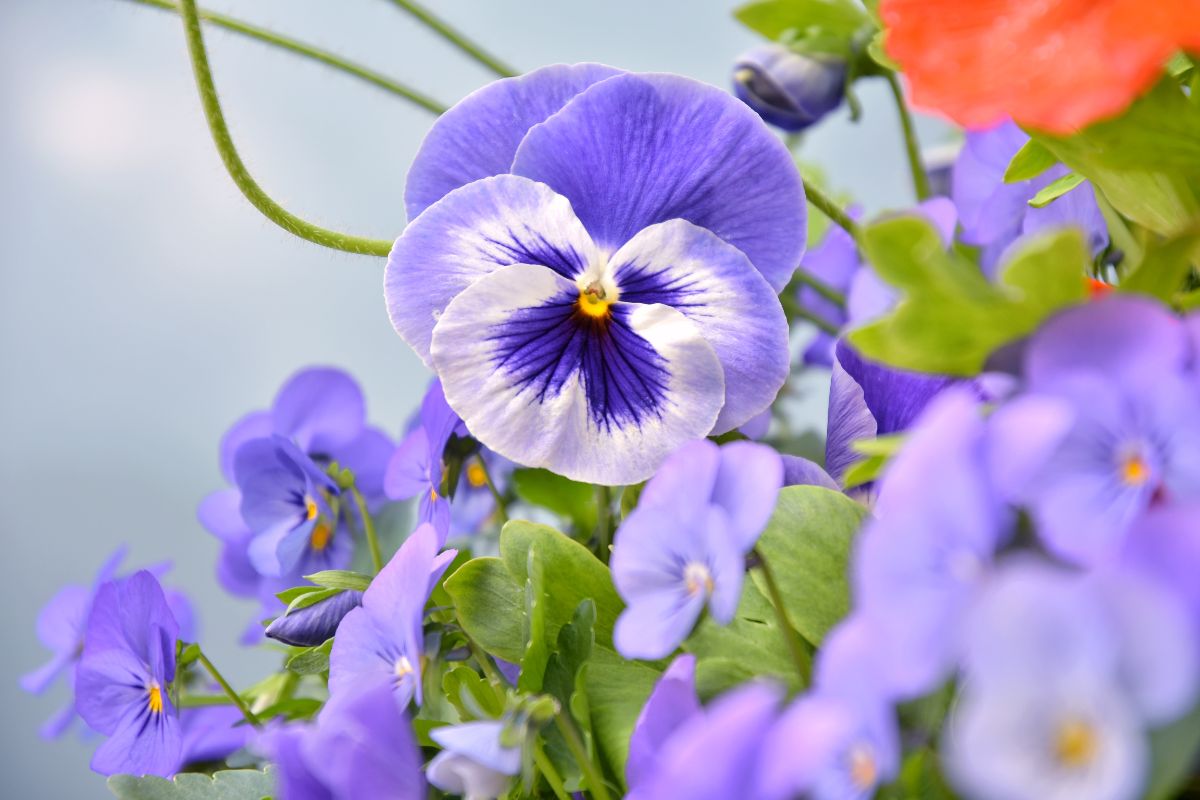
To ensure that your pansies bloom early in spring and thrive with ease, one of the best ways is to plant them during fall, right after the first hard frost. Although pansies are a beloved choice for gardeners due to their cheerful and vibrant colors, they can take longer to germinate when grown from seeds. Pansies are considered slow growers, and it can take some time to witness the full blossoming of these beautiful flowers.
For optimal results, plant your pansy seeds in soil that is prepared beforehand and keep them at a depth of ⅙ to ¼”. Pansy seeds require darkness to germinate, so it is essential to ensure that they are planted accordingly. In addition, placing these pint-sized plants at the front of flower beds will allow you to enjoy their colorful blooms to the fullest. Whether your garden receives full sun or part shade, pansies will thrive with high to moderate watering levels. With these tips in mind, you can enjoy the beauty of pansies in your garden all year round!
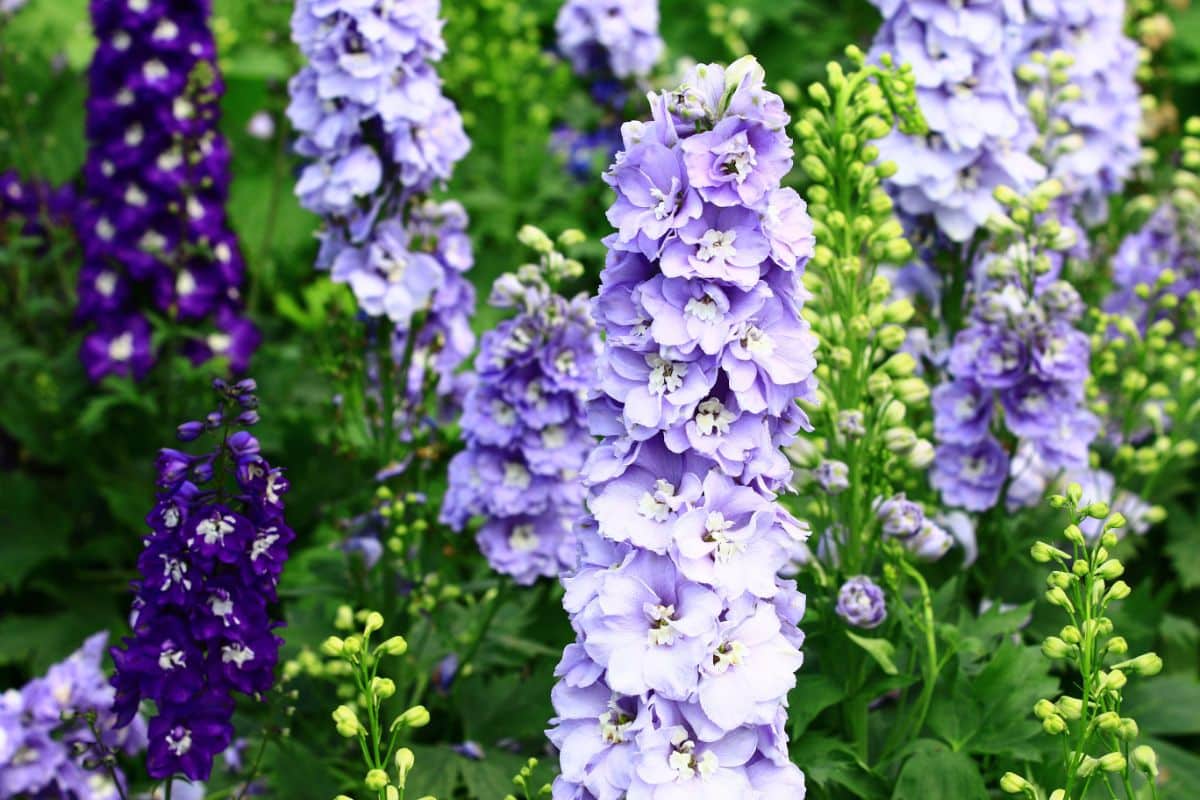
Fall planting of Larkspurs is suitable, but only in specific regions. The plant requires full sunlight and moderate watering. Larkspur is not advisable to be sown during the fall season in all areas, especially in regions with rainy winters. In such regions, the seeds may rot before germinating. However, if you inhabit an area with a dry winter season, you can sow Larkspur seeds in autumn in growing zones 5b upwards. To sow Larkspur, ensure that you plant the seeds about ¼” deep in the soil, which should be rich and prepared. If you plan to grow multiple Larkspur plants together, space the seeds about 12″ apart. When spring temperatures warm up, Larkspur plants will start to sprout, and they will begin blooming from late spring to early summer. Lastly, Sweet William (Dianthus barbatus) is another alternative worth exploring.

If you want your Sweet Williams to bloom in their first year, try sowing the seeds in the fall! These plants thrive best in full sun and moderate amounts of water, and can be grown in zones 3 to 9. With its shaggy flowers that come in various colors including white, pink, purple, and red, Sweet William is a type of dianthus that can grow from 12 to 24 inches tall. Plant them in mass as border plants or in a container garden for a striking display. Although these plants are usually sold as established seedlings at plant nurseries, they can also be grown from seeds planted either in spring or autumn. If you want quicker results, autumn planting is recommended as the seeds will more likely flower the following year. To encourage germination, lightly cover the seeds with soil.
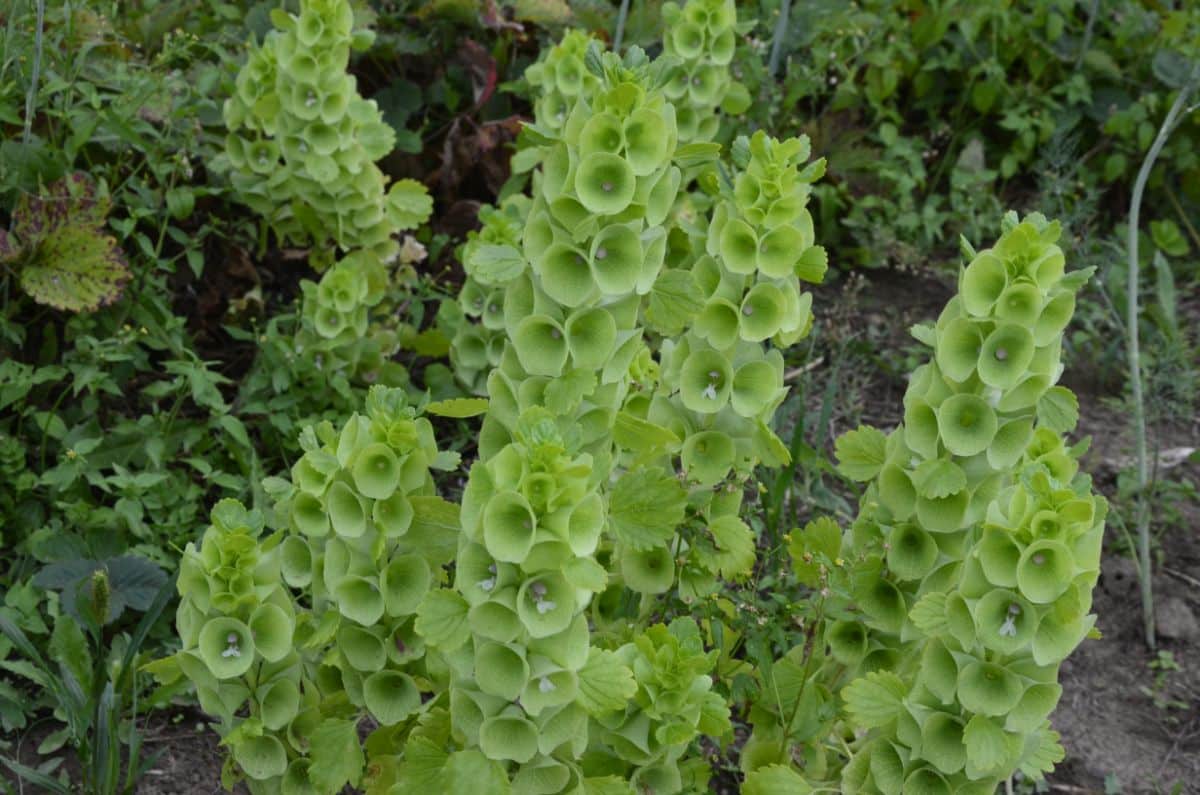
Looking to add something special to your cut flower garden? Consider the stunning Bells of Ireland. With their columnar flower stalks and bright green, bell-shaped flowers, these plants are a popular choice for gardeners. They thrive in full sun and moderate water and can be grown in zones 2 to 11. For best results, some gardeners recommend starting the seeds indoors and transplanting them outside in spring, while others suggest sowing them outdoors in autumn for a period of cold exposure before germination. Another option to consider is the Virginia stock, also known as Malcolmia maritima.
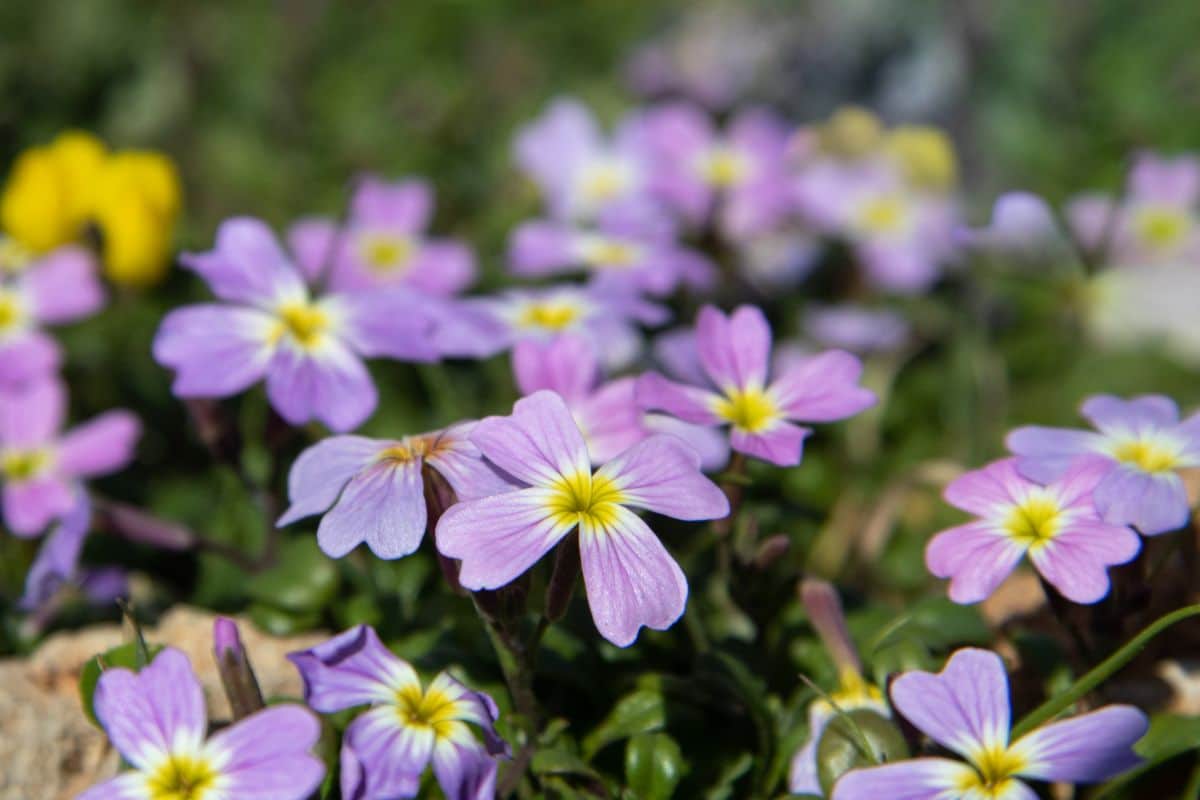
Fun fact: Virginia stock, a Mediterranean native, is actually related to broccoli and cabbage!
Looking for a new addition to your garden? Consider Virginia stock! This plant requires full sun to part shade and moderate to high watering. It can be grown in Zones 3 to 9.
Virginia stock has been popular since the late 19th century and is often included in wildflower mixes. In fact, it has become naturalized in several parts of the US due to its prolific sowing. Interestingly, Virginia stock is a brassica plant and closely related to mustard, broccoli, and cabbage!
To ensure continuous blooms, succession sow Virginia stock seeds every 4 weeks after planting in the spring. However, if you live in a mild climate, you can also sow seeds outdoors in late fall for early spring blooms. These flowers come in shades of pink, purple, and white.
Looking for another option? Give Nemophila menziesii, or baby blue eyes, a try!

To avoid disrupting the growth of baby blue eyes, it is recommended to avoid disturbing them after planting. These plants thrive in part shade and require moderate to low amounts of water. They are native to California and add a romantic touch to any garden bed while attracting pollinators. Baby blue eyes have bright green stems that are semi-succulent and can grow up to 6 to 12 inches high. For best results, plant baby blue eyes seeds in spring or fall without disturbing them after planting. In zones 7 to 10, planting seeds in late summer to late fall can yield flowers in as little as 6 weeks. Another beautiful plant option is Love in a Mist (Nigella damascena).
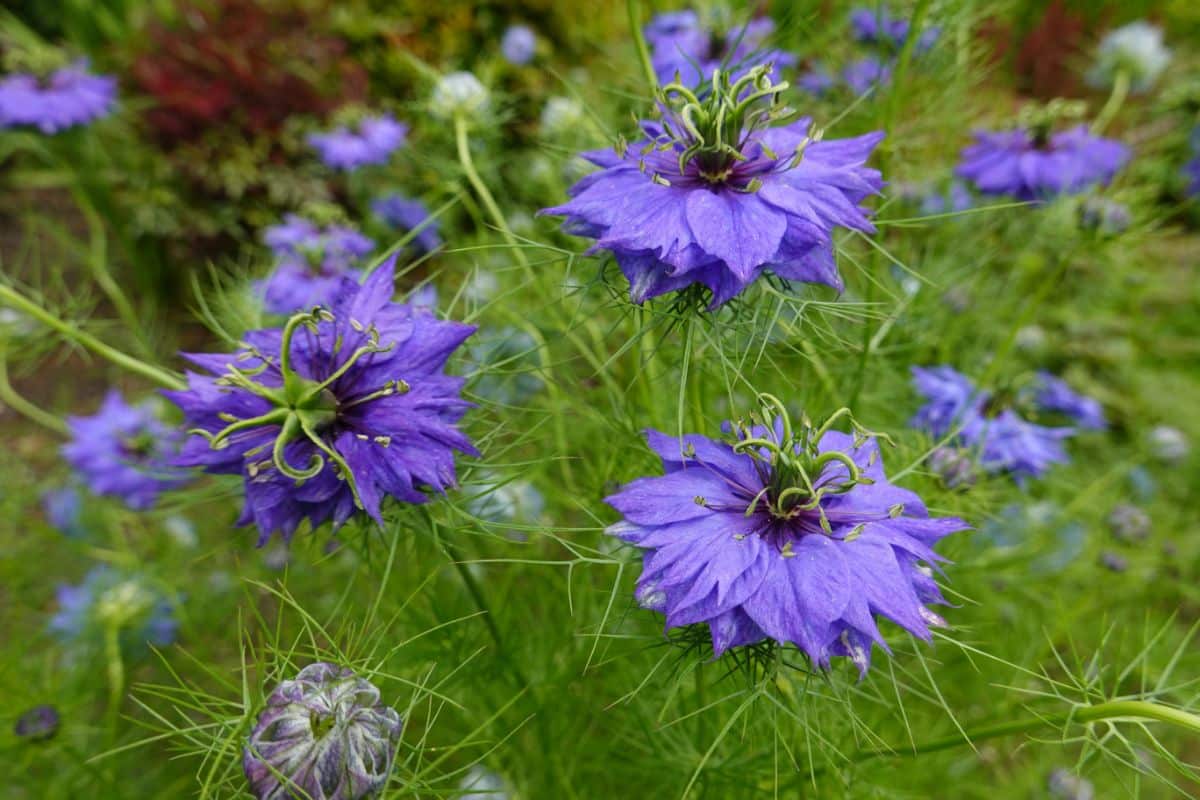
If you want to enjoy lovely spring blooms of Love in a mist earlier, try fall sowing! This plant is known for its delicate and colorful flowers, which usually come in blue but also have cultivars with pink, purple, and white blooms. Love in a mist can be grown in full sun and requires moderate watering, thriving in zones 2 to 11. Its feathery leaves give off an elegant and light feel to any garden bed. To get a second crop of love in the mist blooms in autumn, leave the spent flowers untrimmed. Alternatively, sow the plant’s seeds deliberately during autumn in mild climates to get an early bloom in spring. Don’t forget to add Sweet Alyssum (Lobularia maritima) to your garden list too!
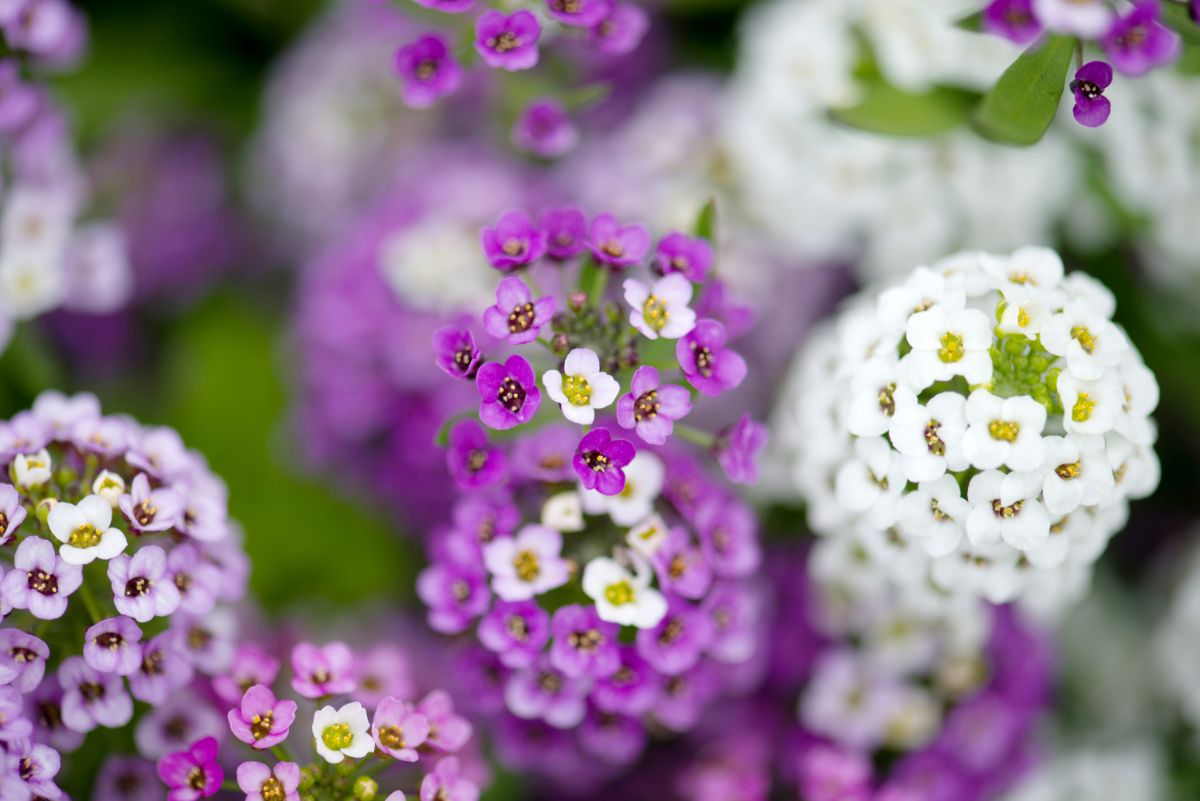
For a beautiful and beneficial addition to your garden, try planting sweet alyssum. This plant prefers full sun to part shade and moderate watering, making it easy to care for in zones 9 to 11. Sweet alyssum is versatile in its uses, as it makes a great option for container gardens, borders, or groundcover. In the spring and fall, this plant produces clusters of fragrant flowers in shades of purple and white that not only look lovely but also attract pollinators and can be used for pest control through companion planting. While nursery starts are common for planting, sweet alyssum seeds can also be directly sown outdoors in early spring or summer, and even in autumn to winter for mild climates. When sowing, it’s best to lightly broadcast the seeds by hand and avoid covering them with too much soil.
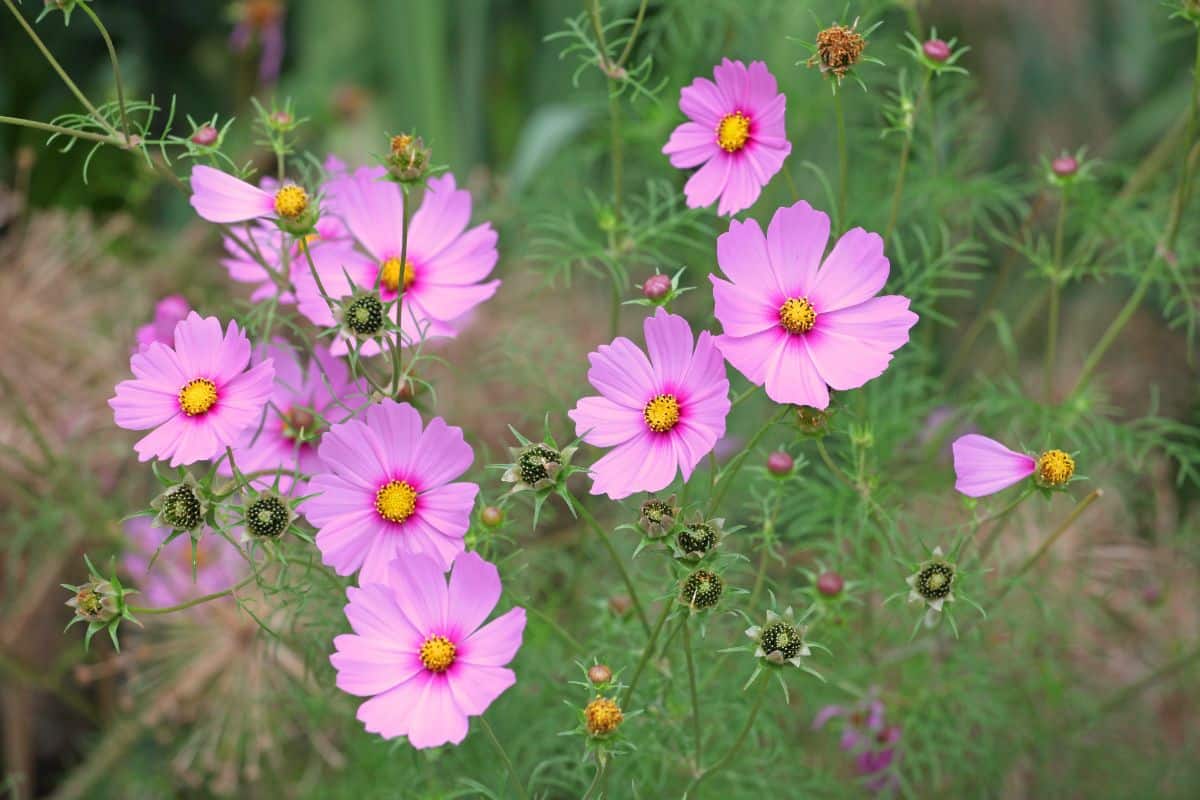
The cosmos flower is a great option for those who want a low-maintenance plant that self-sows easily. It thrives in full sun and only requires moderate watering. From early summer to fall, you can enjoy beautiful pink and white blooms that make stunning bouquets and floral arrangements. If you want to encourage self-sowing, you can simply let the flowers do their thing, or you can plant seeds in the fall. The best time to sow cosmos seeds is after your garden has experienced a few hard frosts. Scatter them lightly over the soil or create “seed bombs” for even easier sowing. By planting late in the season, you can ensure that the seeds won’t germinate too early and become damaged by winter weather. Another option to consider is flax (Linum grandiflorum).
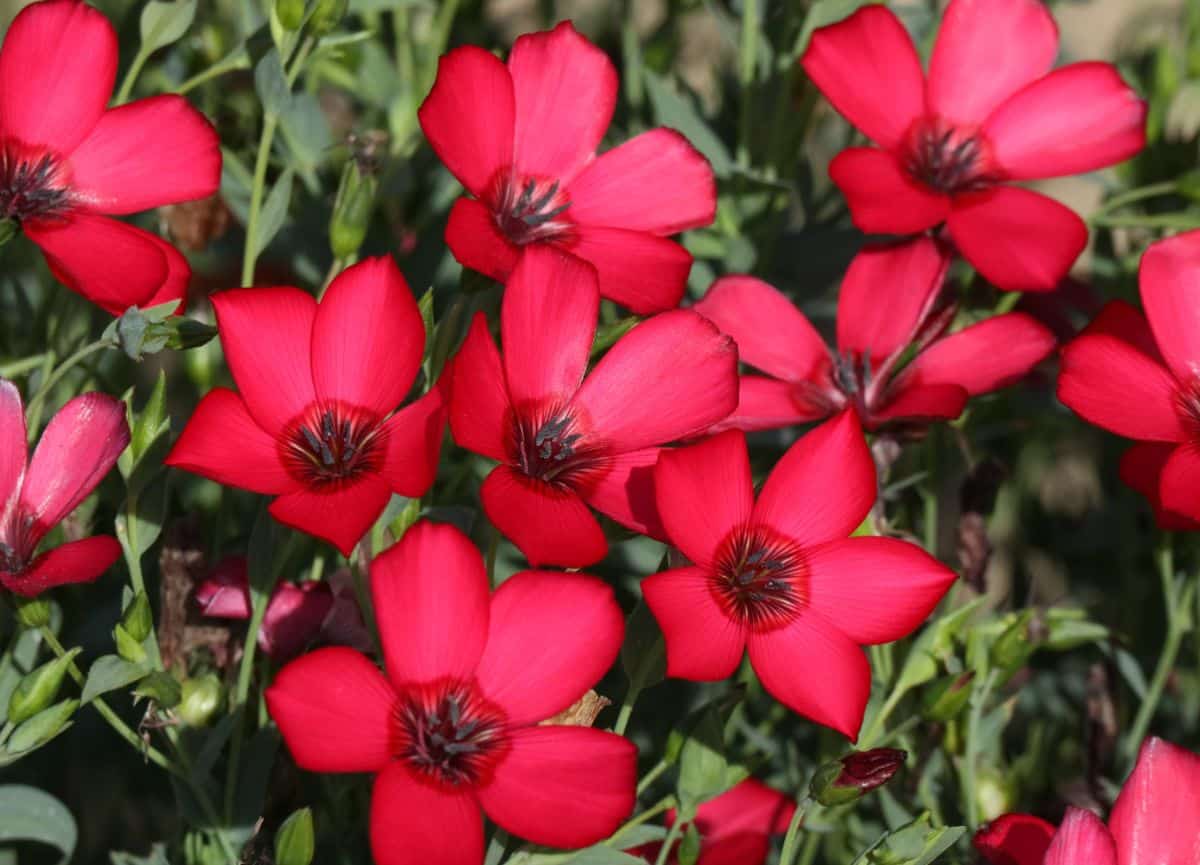
If you’re looking to add pops of vibrant color to your garden, consider planting some flax. This annual plant is a breeze to grow and will impress visitors with its scarlet blossoms from summer through fall. The saucer-shaped flowers are perched atop the plant’s erect, branching stems, which contrast beautifully with the greyish-green leaves. For an eye-catching display, plant flax in clusters or use them to line your ornamental beds. In most cases, flax seeds should be sown in spring, and you can keep the blooms coming by planting new seeds every few weeks throughout the summer. However, if you live in a mild climate (zones 8-10), you can also sow flax seeds in the fall for an earlier show of flowers the following year.
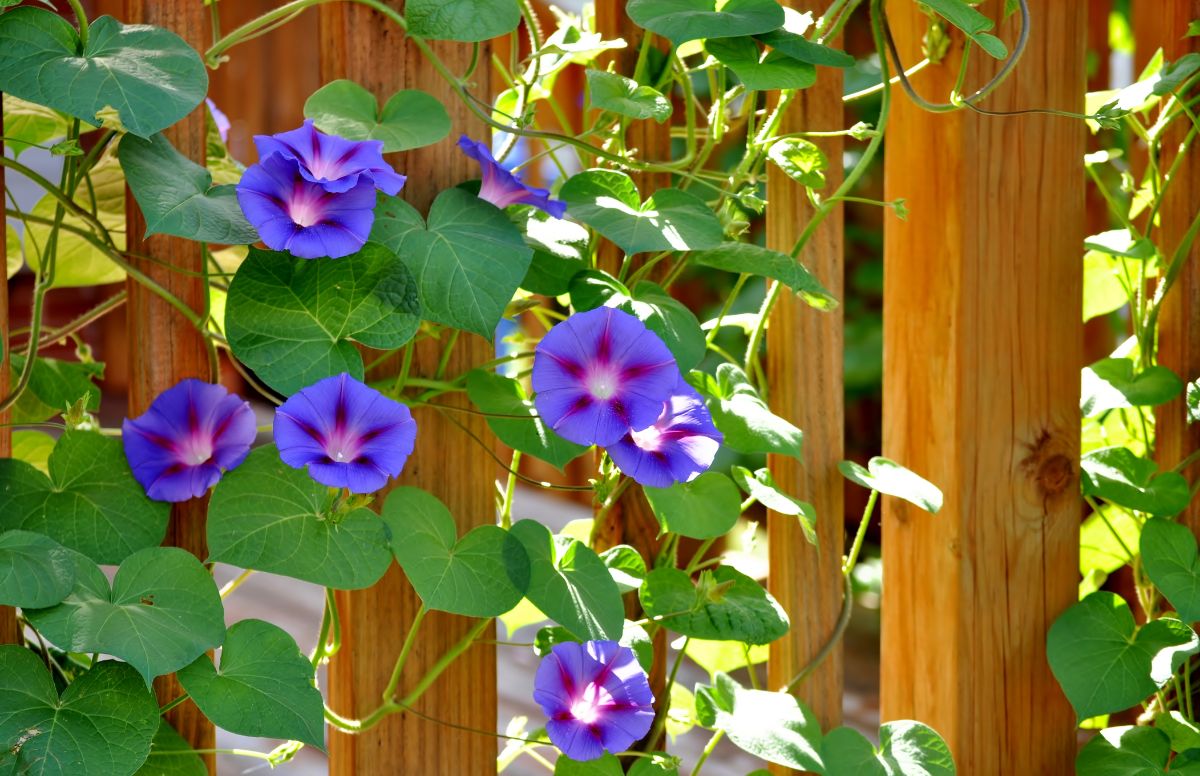
To ensure successful growth of morning glories, fall sowing is a preferable option as they do not transplant easily. These plants require full sun and moderate watering and can thrive in zones 2 to 11. Morning glories are known for their vigorous and vining growth habit, and their trumpet-shaped blooms in an array of colors attract butterflies and hummingbirds. Starting morning glory seeds indoors may be tricky due to their growth pattern, therefore direct sowing is often suggested. If you plan on fall sowing, it’s best to wait until after a few hard frosts have passed before planting. Another great plant to consider is the bachelor button, also known as Centaurea cyanus.
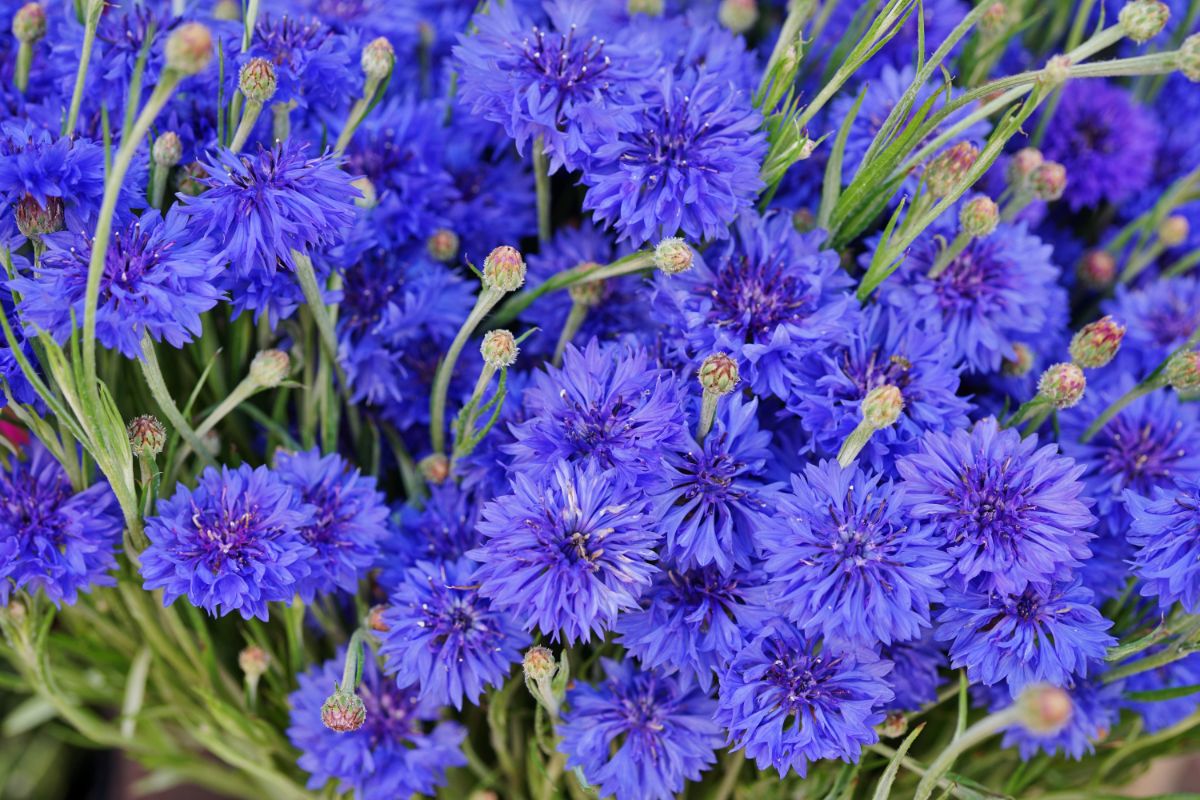
If you’re looking for a charming and low-maintenance plant to add to your garden, consider the bachelor buttons. These plants are also known as cornflowers and have beautiful blue, purple, and white flowers that bloom from early summer to fall. They are great companion plants for vegetable gardens and attract pollinators. Plus, the flowers are edible and can be used as salad toppers.
While planting bachelor buttons in the spring is easy enough, there’s a gardening hack that not many people know about – fall planting. By planting bachelor button seeds about ¼ inch deep in your garden soil roughly six weeks before your first frost date, you’ll get bigger flowers with longer stems. Don’t miss out on this secret to boost your garden’s beauty!
Another plant worth considering is Eryngo (Eryngium armatum).
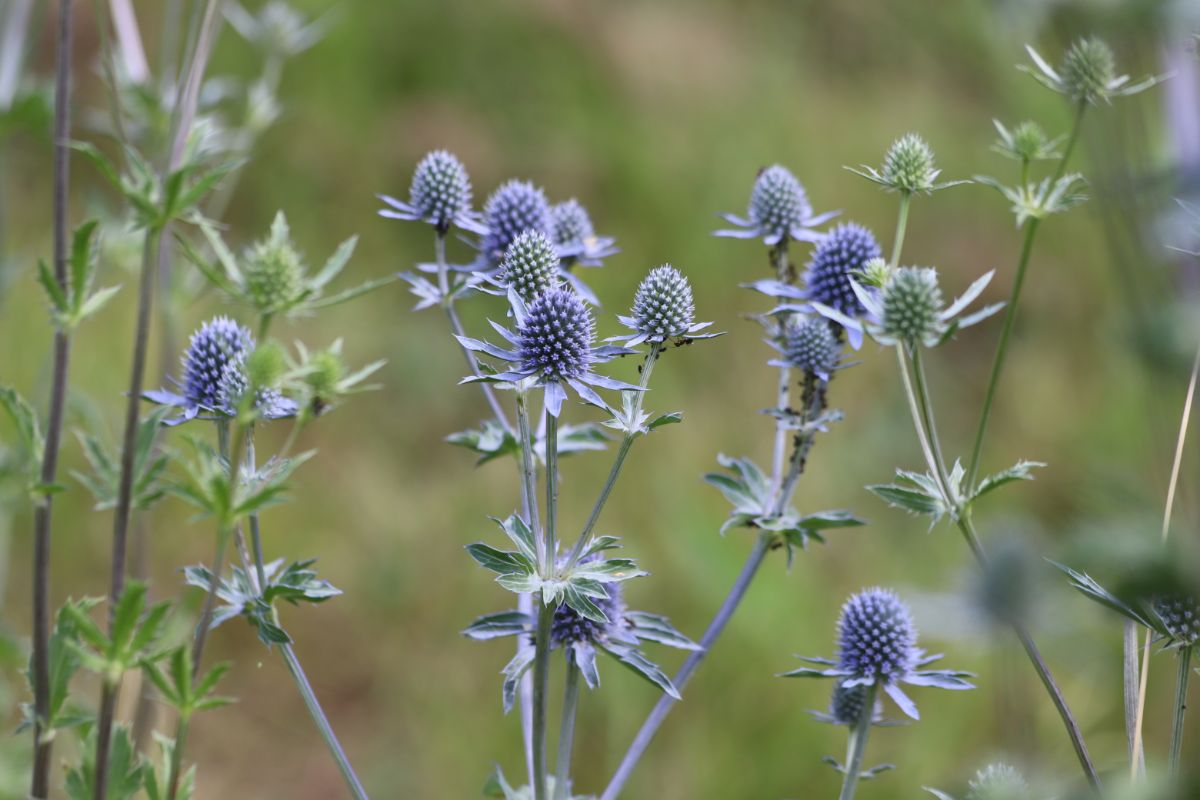
Eryngo, also known as sea holly, is a member of the Umbellifer family that includes carrots and Queen Anne’s Lace. It requires full sun and moderate watering and can be grown in zones 4 to 9. The plant is known for its silver to blue flowers and blooms throughout summer and fall, attracting pollinators. Fall planting simplifies care, and eryngo makes sturdy cut flowers and is salt tolerant, making it suitable for coastal gardens or areas near salty roads.

Planting annual flower seeds in the fall can make your gardening easier and help your plants germinate faster. Many gardeners believe that annuals cannot be planted in the fall, but with the right timing and plant selection, you can sow a variety of flower seeds in autumn and enjoy earlier blooms in the spring. Fall planting is a great way to simplify your gardening tasks during the busy spring season and helps your plants establish themselves in the garden faster. Additionally, some of the seeds discussed in this article can be used to create seed bombs, which benefit pollinators and add more flowers to your garden throughout the year. We hope this article has encouraged you to experiment with planting flower seeds in the fall. For more ideas on what flowers to plant in autumn gardens, be sure to check out our quick guide!





